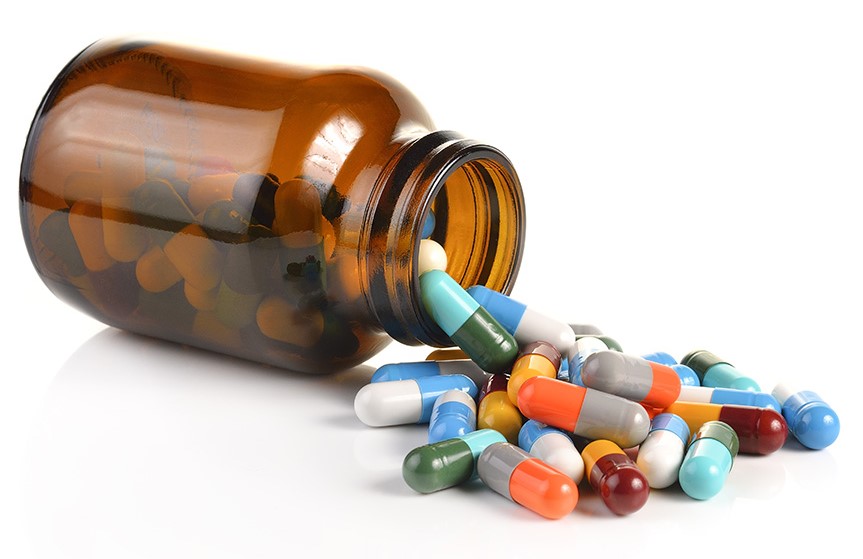Antibiotics in peas: pros and cons

Photo is illustrative in nature. From open sources.
Peas are one of the most popular crops in the world. it is rich in protein, carbohydrates, vitamins and minerals. But recently it has become known that some pea growers use antibiotics in the growing process. This raises concerns among consumers who are concerned about their HEALTH.
Why use antibiotics in peas?
Antibiotics are used to protect plants from diseases and pests. They help prevent crop losses and increase productivity. However, the use of antibiotics in pea production can have negative consequences.
What are the risks associated with the use of antibiotics in peas?
The first concern of consumers is the possibility of developing an allergy to antibiotics. If a person consumes products containing antibiotics, they may develop an allergic reaction to these drugs. In addition, the use of antibiotics can lead to the development of antibiotic resistance. This means that if infections need to be treated with antibiotics, they may not be effective.
What antibiotics are used in peas?
Antibiotics commonly used include tetracycline, streptomycin, and kanamycin. They are widely used in agriculture and can end up in the food we eat.
What to do if you find antibiotics in peas?
If you find antibiotics in peas, don't panic. In most cases, the amount of antibiotics in food is so low that they cannot harm human health. However, if you are concerned about your health, it is better to consult a DOCTOR and get tested.
In conclusion, it can be said that the use of antibiotics in peas has its pros and cons. On the one hand, it helps to prevent plant diseases and increase yields. On the other hand, it can lead to the development of antibiotic resistance and allergic reactions in consumers. Therefore, producers and consumers need to be more aware of what antibiotics are used in pea production and what risks this poses to human health.
Read together with it:
- Jakarta authorities plan to ban the sale of dog and cat meat.The governor of Indonesia's capital, Pramodjo Anung Wibowo, announced plans to ban the sale of dog and cat MEAT for human consumption. The decision was announced after a meeting with representatives of the animal rights organization Dog.MEAT Free Indonesia (DMFI), writes Antara. The governor explained that this ban will be part of measures to curb the spread of rabies in the city. A special gubern...
- Small agricultural producers in the Krasnoyarsk Territory will receive partial compensation for their equipment and machinery costs.The per-recipient limit is 20 million rubles. The regional Ministry of Agriculture is accepting applications for the subsidy until October 24th . Individual entrepreneurs, peasant farms, and agricultural consumer cooperatives that purchased machinery and equipment between June 2024 and May of this year are eligible for state support. The list includes all major types of equipment—grain and forage ...
- About shashlik, point of view, and dragons. An interview with Academician D.A. Baimukanov.PIONERPRODUKT.by continues its series of interviews with the eminent Kazakhstani scientist Dastanbek Asylbekovich Baimukanov , recorded by his younger brother, Syzdyk Asylbekovich Baimukanov. The first interview is titled: "A Story of Shepherds, Sheep, and Freedom . " The second interview is titled: " On Beshbarmak, Money, MEAT, Traditions, Genetics, and Selective Breeding." We remind you that num...
- Rospotrebnadzor has identified antibiotics and bacteria in meat products in the Angara region.Microbiological abnormalities were detected in 4.9% of samples, potentially indicating the presence of dangerous bacteria. The results for antibiotic levels were particularly alarming: levels exceeded the standard in 6.4% of samples. This may indicate that the animals were not given the required post-slaughter treatment period. Additionally, 4.4% of the MEAT did not meet physical and chemical stan...
- Emotions, care, and the three-year crisis: What influences a child's psyche, explained an expertOctober 10, MINSK . On Mental HEALTH Day, Oksana Shilova, a psychiatrist and narcologist of the highest qualification category, leading researcher at the Republican Scientific and Practical Center for Mental Health, PhD in Medicine, and Associate Professor, discussed how children's mental health develops, BELTA reports. "The mental health of different categories of people, as well as the provision...
- Tightening penalties for transporting livestock without veterinary documents in RussiaCurrently, the epizootic situation in the country is assessed as stable, however, there are threats that can destabilize this situation, including the spread of diseases such asBrucellosis , especially in regions with private farms where compliance with veterinary regulations is difficult, creates dangerous situations in which uninspected livestock can become a source of infectious diseases. The n...
- A key element of a healthy lifestyle. An expert reminded us of the importance of proper nutrition.October 7, MINSK . Snezhana Kavrigo, HEAD of the Minsk City HEALTH Center, reminded patients of the importance of proper nutrition, a BELTA correspondent reports. "I urge our patients to watch what they buy. No matter where you are, something can spoil. As a consumer myself, I constantly watch and try new things, but it's the human factor," urged Snezhana Kavrigo. She noted that this advice also a...
- How prevention is changing the fight against the leading cause of death in RussiaThe network of vascular centers established in RUSSIA has proven its effectiveness in saving lives. Today, the state prioritizes managing risk factors and increasing patient adherence to treatment.September 29th marks World Heart Day— cardiovascular HEALTH directly determines life quality and life expectancy. In Russia, the prevention, diagnosis, and treatment of heart and vascular diseases are a ...
- The Tyumen chain of stores "Svetofor" was fined 700,000 rubles for selling meat laced with antibiotics.In April 2025, ROSSELKHOZNADZOR (Federal Service for Veterinary and Phytosanitary Surveillance) specialists conducted inspections at three stores in the chain and discovered that MEAT containing antibiotics and other veterinary drugs, as well as soy DNA, was being sold in excess of permissible levels . These products pose a HEALTH risk to consumers. Despite company representatives' arguments that ...




























































